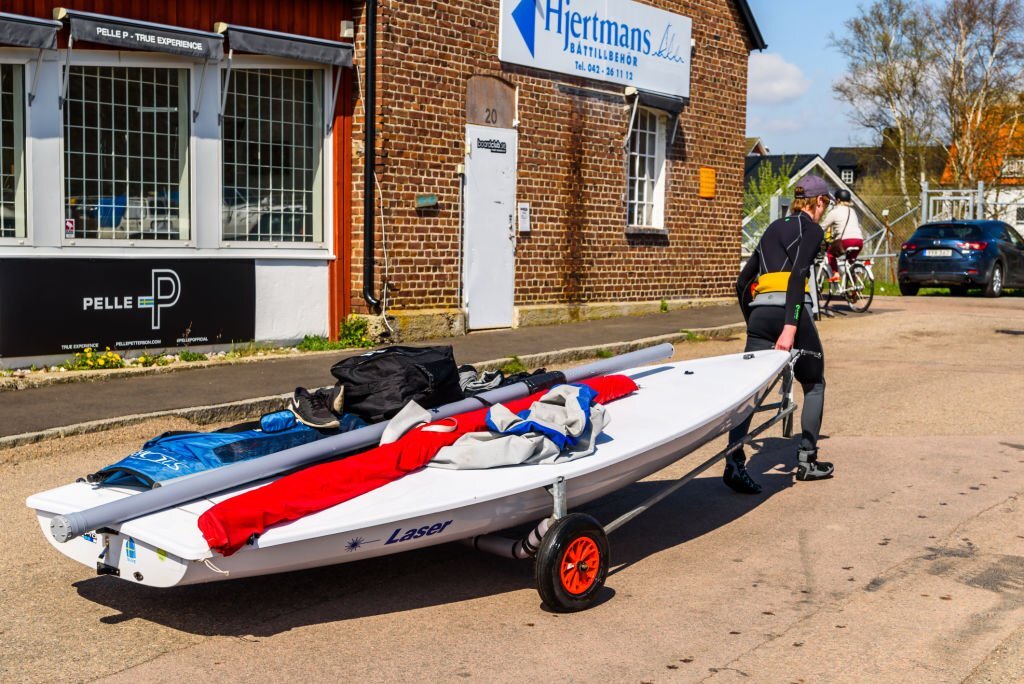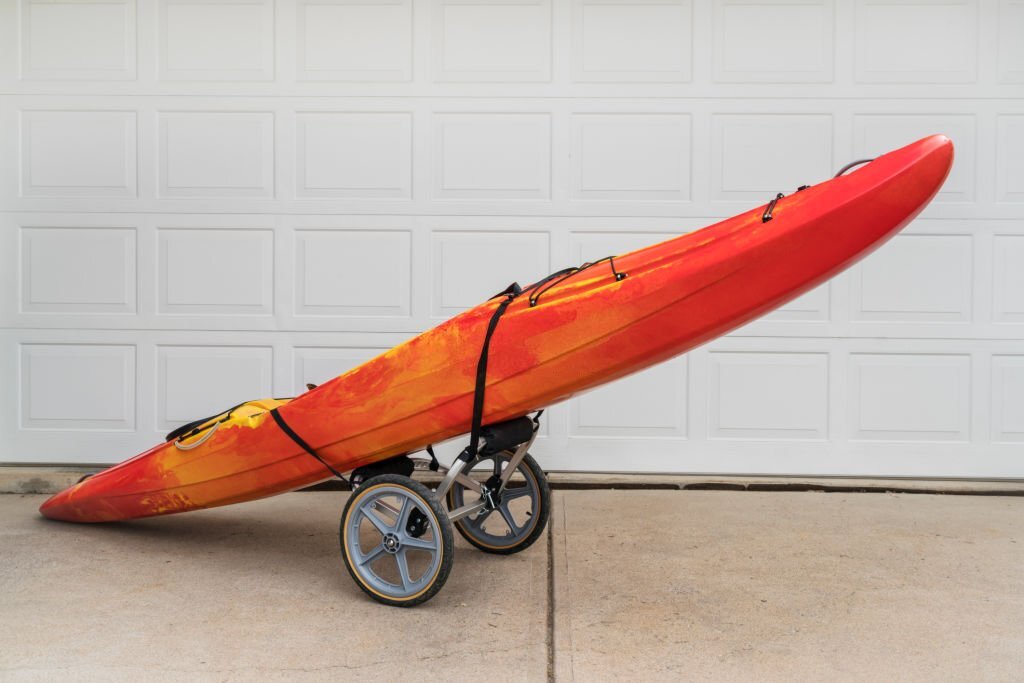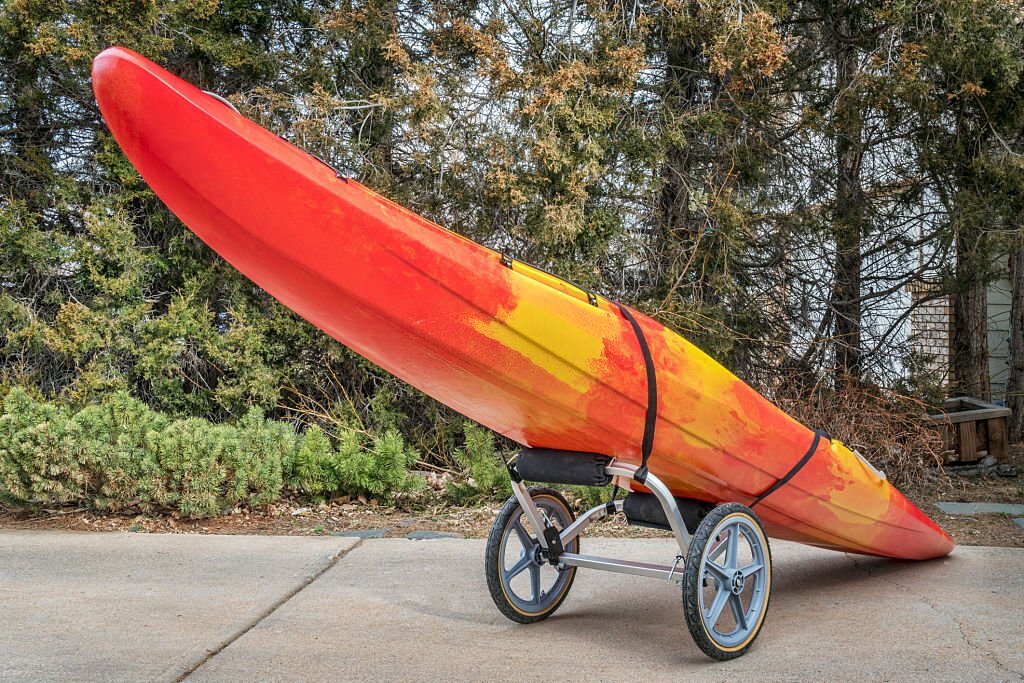The kayak anchor trolley proves the most admired handy tool when it comes to spending soothing time on the water or fishing in rough weather.
When the wind pushes your kayak back and forth fishing becomes nearly impossible. In this situation, anchor trolleys are lifesaver that helps in increased stability and provides better control.
However, most novice kayakers and anglers still wonder how the anchor system works, its proper use, and installation process. In this short read, you are going to run through how the anchor trolley works along with the simple installation process and answer some queries which you might encounter while thinking about the anchor trolleys. So go on;
Table of Contents
Why Use An Anchor Trolley
It is essential to know why you need an anchor trolley, before going into a discussion on how to use them. The anchor trolley system best assists the anglers to target the school of fish in rough weather when the winds accelerate the kayak from staying in one place. Anchor trolleys allows to set the kayak’s position in windy weather and rest at the favorite place where a large number of fish are expected or just enjoy the pleasures of mother nature with some snacks.
The kayak anchor trolleys come in a variety of options to choose from and use depending on the type of water you are going to explore. Let’s have a brief look at each so you can get a better idea of which type suits you the best to mount for your next expedition.
Stake-Out Pole or Sand Anchors: The quickest, simplest, and most cost-effective among all the kayak anchors is the stake-out pole. It works best in shallow water with thick mud at the bottom. The pole easily gets into the mud and helps in stabilizing the kayak in no time.
Grapnel Anchor: A bit heavy to the wallet but also more useful and functional to use in rocky water bottoms. Their strong body proves less likely to damage and assists in long fishing adventures. Once it is attached to the rope and pulley, release it to the stern of the kayak and it will keep you in the place you are most interested in.
Bruce-Claw Anchors: Their L-shape design with pointing claws makes their functionality similar to grapnel anchors. However, they can only be used in soft or muddy waters for a few hours of fishing or smooth fishing.
Brush Gripping Anchors: Brush grippers prove most suitable while kayaking near the rocky shore or in a tree-dense area. Their large pointing teeth provide a stronger pull to the kayak and give free time to the paddler. While wind pushes you away from the spot, brush grippers would prove the only life saver to quickly attach them to the passing by tree or rock.

Every kayak anchor requires some suitable conditions and environment to prove its functionality. There are some other types of kayak anchors that help in better control however, not useful enough to trust in extreme conditions.
Anchor Trolley Kit
Almost every anchor trolley comes with all the necessary tools to completely install the anchor system using without going behind the missing tool.
An anchor trolley kit contains two pulleys, rope, cleat, pad eye, bolts, and nuts.
The rope is fixed along the kayak side with two pulleys attached on both ends of the rope. The rope is crossed over the pulleys through the pad eyes and the ends are joined with a ring in between them.
Once the setup is installed, the anchor line is attached to the ring which can be then moved to bow or stern depending on the need and small moves.
Kayak Anchor Trolley Installation
Installing a new anchor system is not a demanding process. However, the kayaker must ensure that the system is completely fixed having no issue getting affected by strong currents in the water.
Before starting the process, make sure the anchor kit contains all the essential installation accessories. The additional tools you are going to need are a drill for making holes and a nut driver to tighten the screws and pad eyes, and a cleat.
Now take the pulleys and find out their installation place. Mark the hole points using bolts or any other pointing object. Drill the holes, place the nuts and tighten them using a screwdriver. Do the step for the other pulley. Make sure to choose the perfectly aligned point with the first one for the second pulley and the pulleys face facing each other.
The next step is to install the cleat. It is mounted horizontally in between the two pulleys and works to prevent the anchor line from moving. Again mark the installing point by placing the cleat horizontally and is perfectly aligned with the pulleys. Now drill the holes and insert screws.
The last installing accessory is the pad eyes. They are used to keep the anchor line in place and prevent it from moving up and down. Usually, the kit comes with two pad eyes, each mounted vertically on the bow and stern between the cleat and the pulley. Repeat the drilling process and finish the mounting setup.

Now comes the time to run the rope through the installing points. Starting from the bow, run one end of the rope in an upward direction through the pulley and extend it to run through the pad eye, above the cleat, through the second pad eye, and the stern pulley.
Fasten the same end with the ring and also the other end of the rope, so that both ends of the rope are no longer free. You may be left with the extra rope from the end which you fastened to the ring from the bow side, cut the extra rope, and you are done with the anchor installation.
Keep points to consider while mounting
- Pulleys should be installed along the kayak side, a bit higher above the water level to stop the moving water from disrupting the anchor system.
- Make sure to choose the most end of the bow and stern for mounting pulleys. It helps in more stabilization and keeps the boat in the flow of wind.
- To make the rope go through the cleat, ensure it is installed near the kayak cockpit.
- Install more than two pad eyes, if you are unsure about the alignment of the anchor line.
- Well nuts have a preference over messy silicon since of their more adhesive power against moisture.
How to use Anchor Trolley On Kayak
Once the anchor trolley is installed the next step in which the paddlers might struggle is finding the right direction to fix the anchor trolley. The rule of thumb is to notice the wind direction and the spot where fishes are most likely to be on while wind.

The most recommended positions are towards stern and bow, if you set the anchor line across the current there may prove a bit tricky position to stay on for a long time.
Kayak Anchor Trolley Left or Right
You may find have a recommendation to install the anchor trolley on the right and other saying to have an anchor on the left side. Also, some prefer to install their anchor system opposite to the casting hand, if they are right-handed their anchor will be on the left side.
However, there is no straight answer to the question. The only factor it depends on is the comfort of the paddler. If the right side feels more comfortable manipulating the system than the left side, then you are good to install it.
Securing Your Anchor Trolley
Securing an anchor trolley for a kayak is a simple process that involves understanding how the device works. An anchor trolley allows you to adjust the position of the anchor along your kayak, keeping it stationary in your chosen spot.
To secure the anchor trolley, start by attaching the anchor line properly. Then, position the trolley where you want it on the kayak’s gunwale.
Finally, lower the anchor into the water and adjust the line as needed to maintain your desired position.
Conclusion
Kayak anchor trolleys allow the anglers to keep running behind the bass when the wind hits their back and face. However, a new addition to the kayak can make the seasonal and novice anglers go through poor installation and inability to use the system properly.
Therefore it is essential to grab the knowledge of firm installation and the proper use to get the full advantage of the control that an anchor trolley system is designed to provide.
